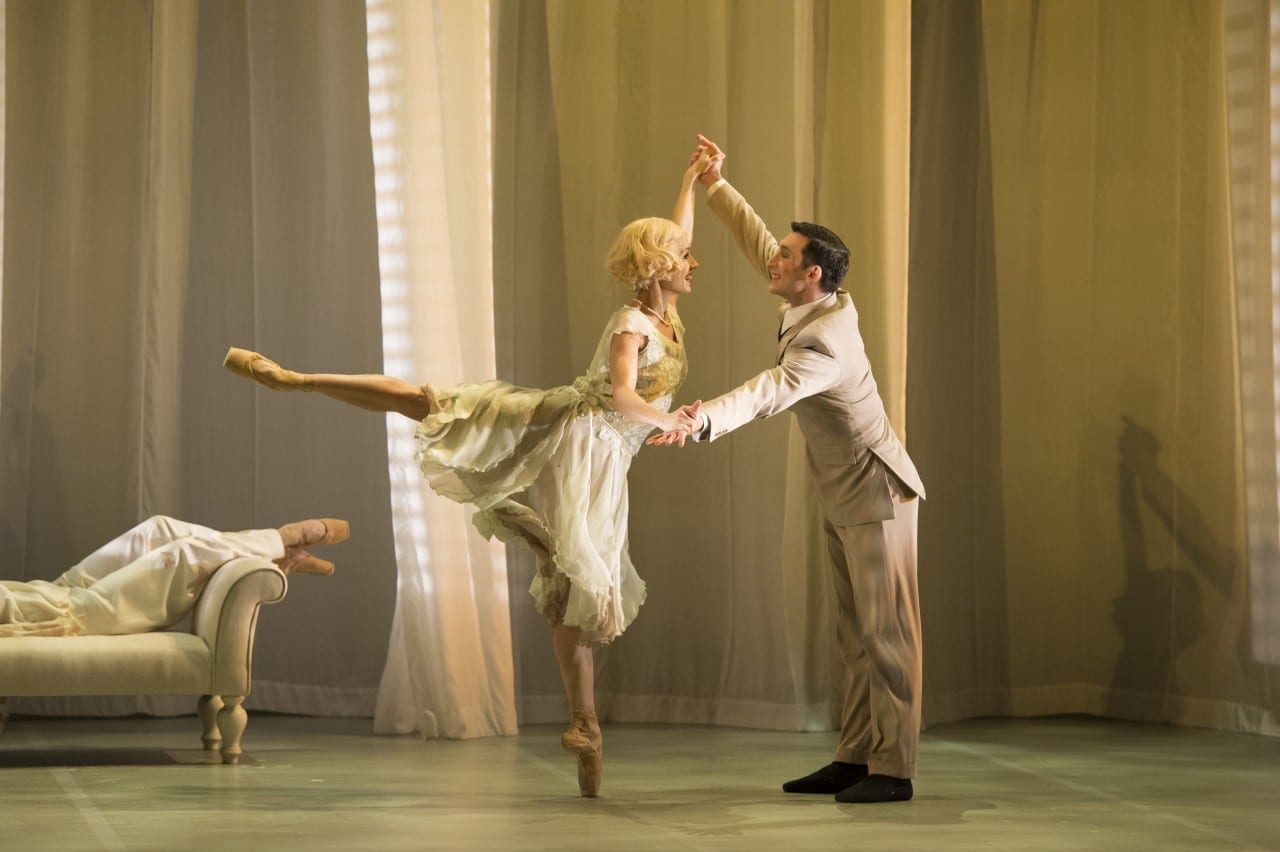The Great Gatsby is a novel which has captured the minds and hearts of readers for almost 100 years; this ballet has the power to do the same. Somehow, the story of Gatsby and his lost love has been seamlessly translated from the page into a ballet which retains the charm and drama of the novel. Although the ballet follows the novel closely, replicating many of its iconic scenes and symbols (the flower scene, or the green light), it follows its own path, focusing more closely on the tragic love story of Gatsby and Daisy, and ending with Gatsby’s death.
Gatsby and Daisy’s past romance is shown to us by two dancers who play the young Daisy and Gatsby – sometimes performing alone onstage, and sometimes alongside the current characters – in an excellent attempt to give more depth to the characters. In addition to being incredibly skilled dancers, the cast are also convincing actors who approach their characters thoughtfully. The choreography is intricate, and many of the characters have certain styles or repeated movements that express their personalities – Myrtle, for example, has a habit of wiggling her hips, reminding us of her sexuality and her role as Tom’s mistress.
The Chanel-inspired costumes are beautiful and historically evocative, and each character is given their own style. In Gatsby and Daisy’s final scene together, they both wear blue, symbolising their connection to one another – while Tom’s darker clothes draw attention to him as the odd one out. In contrast to the elaborate costumes, the set design is simple, but still effective, managing to convey a sense of time and place without being distracting.
The music is both beautiful and highly expressive, mixing a number of styles to create a sound which is appropriate to the ‘20s setting. Some ‘20s popular music is also used in some scenes, pushing the choreography further as ballet is blended with the Charleston. The Great Gatsby is light-hearted and moving, textually accurate and yet with a life and story of its own.

